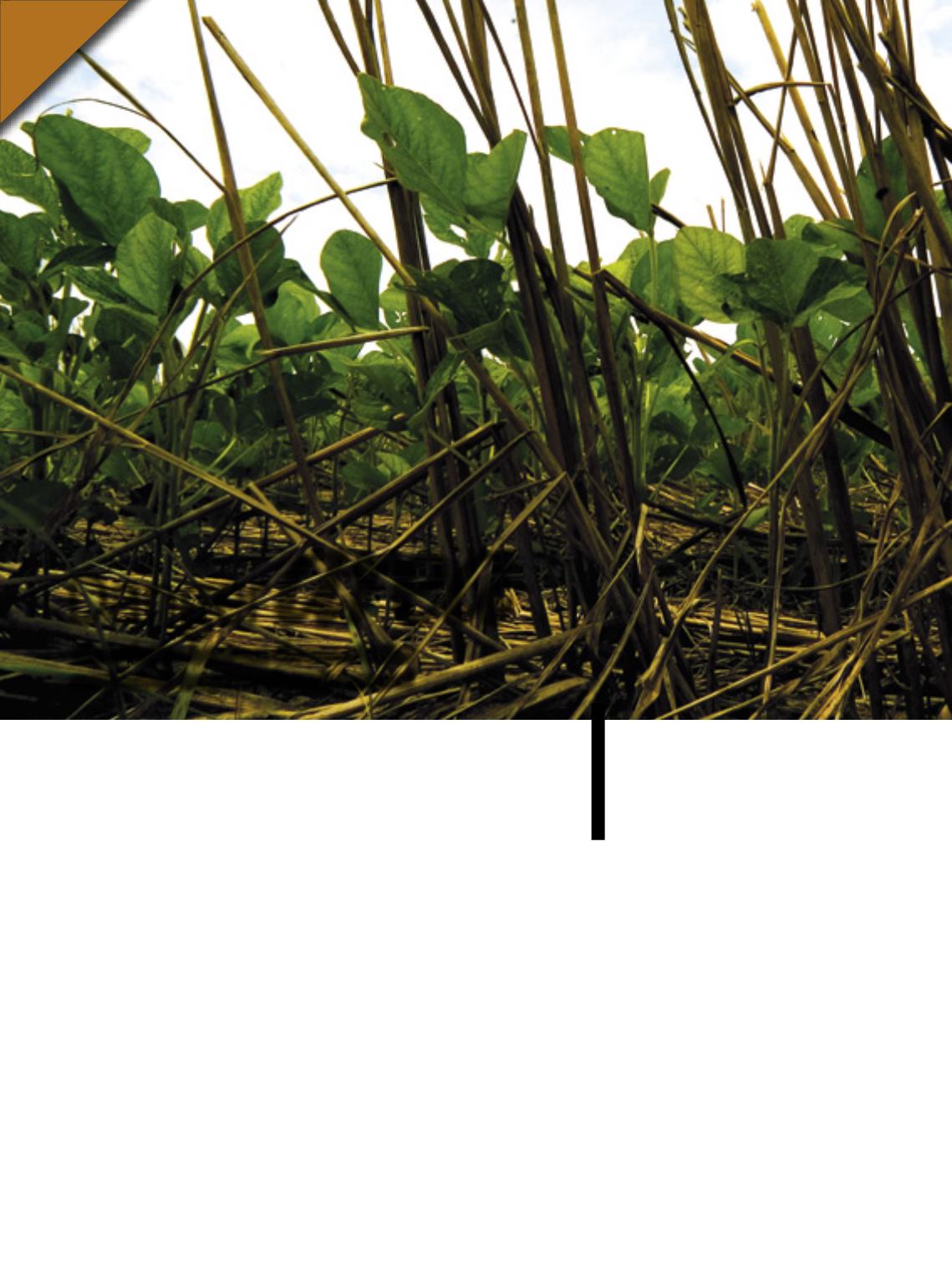
Inor Ag. Assmann
88
RRTechnology,whichprevailsin
upwardsof95%inthenationalarea,
haslostefficiencyduetotheevolution
ofweedsresistanttoglyphosate
T
he constant evolution of weeds
resistant to glyphosate has re-
duced the efficiency of the
Roundup Ready (RR) technology
inthesoybeanproducingregions
in Brazil. Transgenic cultivars are present in
around 95%of the area devoted to soybean.
The emergence of two glyphosate-resistant
weeds (now amounting to eight) in the two
past seasons is one of the serious problems
facedby soybeans inBrazil.
The “super-weeds”, besides competing
with the oilseed for the nutrients available in
the soil, equallydifficult tocontrol and require
thefarmertoresorttoothermethodsandpes-
ticides.Thisimpliesinhigherproductioncosts,
Danger
area
The solution has been the use of other
methods to keepweeds under control
pressed the plants susceptible to its active
ingredient, but triggered the growth of the
ones that tolerate the chemical product.
Even so, the RR system predominates in
Brazil and should stay here for years to come.
In the first place, because there is nothing in
the pipeline to be launched in the portfolio of
the companies with the same impact of this
technology. Furthermore, despite the side ef-
fects, it is a very effective antidote for a great
part of the weeds. The manner the farmers
have managed to keep weeds under control
consistsinassociatingittootherherbicides.
Fernando Adegas, researcher at Embra-
pa Soybean, in Londrina (PR), explains that
the difference in cost for the management
of an area without any resistant plants com-
pared to anareawith twoor three glyphosate
resistant plants could rise fivefold. “It jumps
fromUS$ 30 to upwards of US$ 160 per hect-
are, depending on the case”, he explains. This
amount spent on herbicides only, could se-
riously jeopardize the income from the crop.
more labor, dedication to the crop and in the
chancetogiverisetonewresistantweeds.
It is a fight like cat and rat. Sciencemakes
strides in the control of weeds, nature finds a
way around. Although the selection of plants
that create resistance to chemical products is
anaturalprocess,itiscommonbeliefthatthe
systematic use of the RR technology in Bra-
zil, though in different crops grown in suc-
cession, like soybean, second corn crop and
cotton, contributes towards shortening the
life cycle of the system that combines the
cultivars that bear the resistance and effi-
ciency gene of glyphosate. The constant
and exclusive use of the herbicide gave rise
to a selective pressure, that is to say, it sup-


